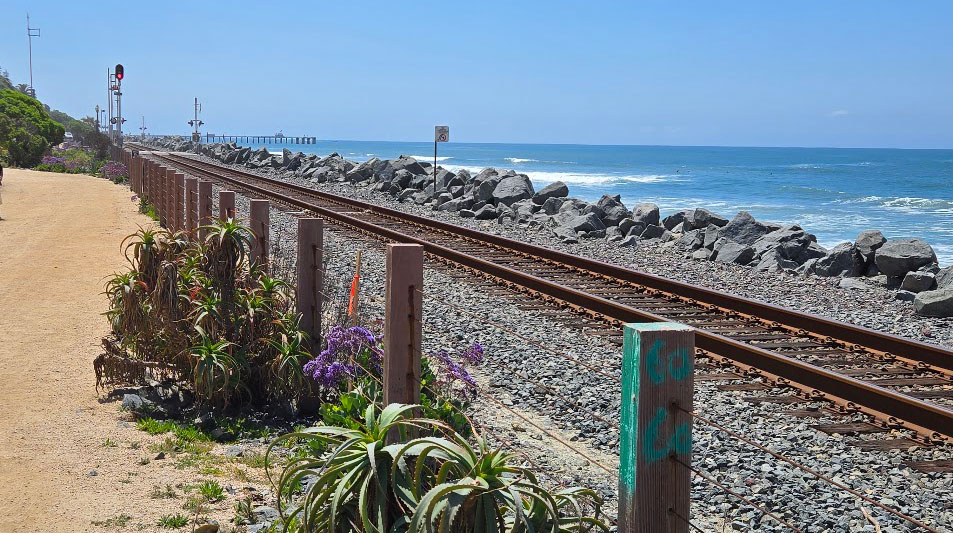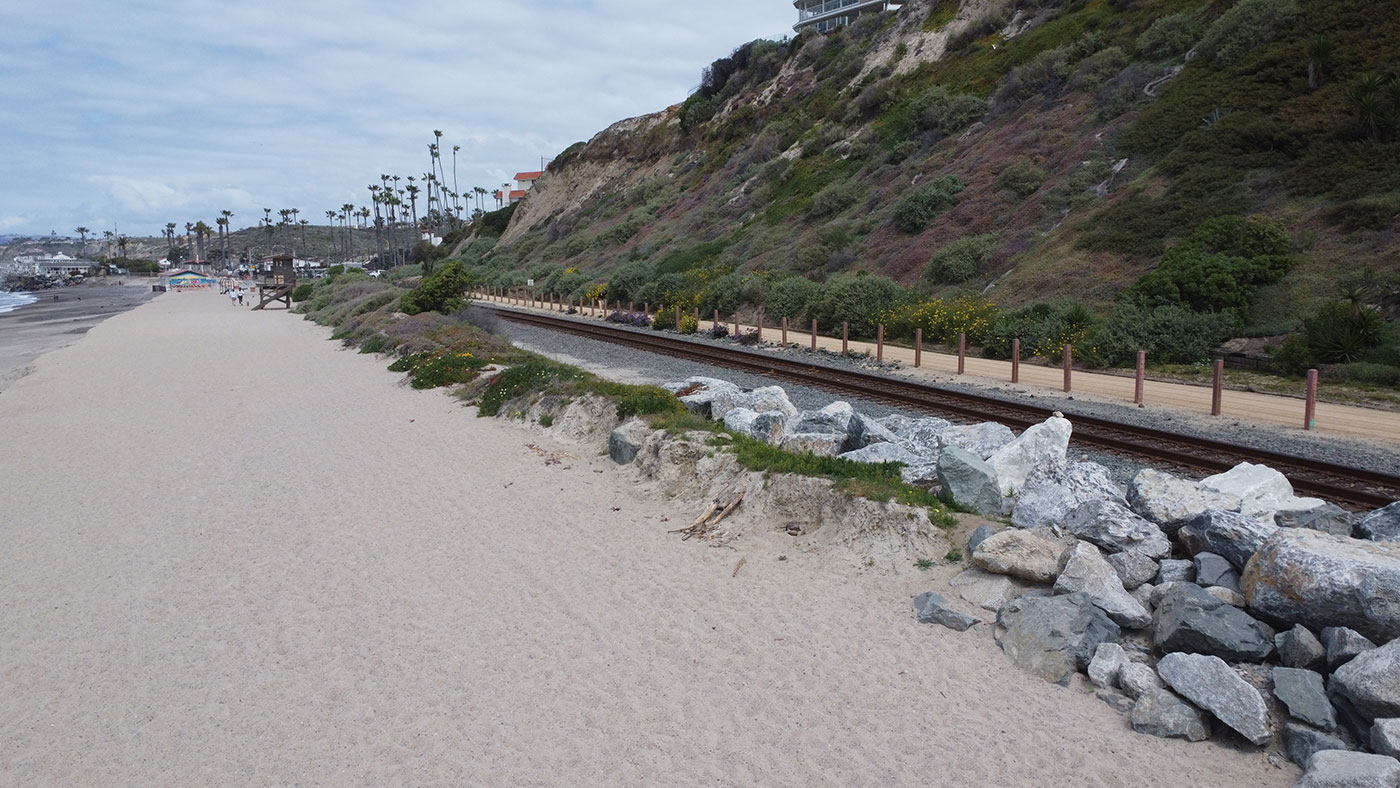Coastal Rail Emergency Projects
Coastal Rail Emergency Projects
The Orange County Transportation Authority (OCTA), in coordination with Metrolink, is taking emergency action to advance emergency projects in San Clemente that will immediately protect a critical link in the state’s rail network.

Project Overview
As a part of Coastal Rail Resiliency Study, OCTA completed an Initial Assessment that identified four areas requiring immediate action to ensure safe and uninterrupted rail operations through San Clemente.
Emergency action is necessary to address urgent threats from slope and beach erosion and to protect the community, rail passengers and overall rail operations.
The work is projected to include approximately 95% sand and 5% rock reinforcement, known as riprap, only to be placed where needed to stabilize the slope and protect the track. OCTA’s effort is the largest volume of sand placement planned for San Clemente beaches in a single effort.
The emergency projects are independent from the Coastal Rail Resiliency Study and are currently underway. Each project activity occurs on a different timeline based on complexity and availability of contractors and materials.
Riprap repair and placement, sand nourishment
Funding
The $310.5 million project is funded with Measure M2, Orange County’s half-cent sales tax for transportation improvements, as well as state and federal funds.
Measure M2
State
Federal
Contact the Outreach Team
If you have any questions or would like to request information in another language, please contact the Outreach Team at (800) 724-0353.




